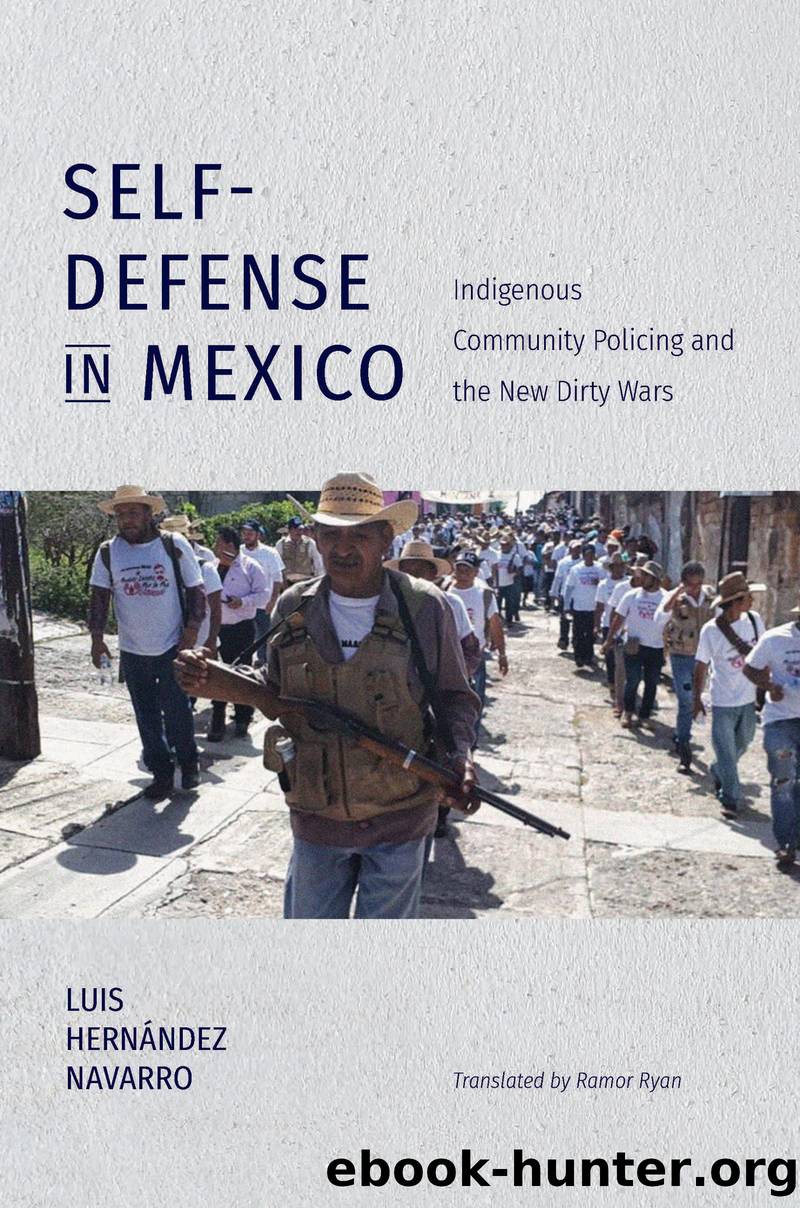Self-Defense in Mexico by Luis Hernández Navarro

Author:Luis Hernández Navarro
Language: eng
Format: epub
Publisher: The University of North Carolina Press
Chilpancingo
In May 2014, the state government relaunched the initiative to bring all police forces under one command structure. The Single Police Command formed part of a national program to reform the police force announced by Felipe Calderón at the end of his six-year presidency. The program was introduced in the municipalities of Acapulco, Chilpancingo, Iguala, Zihuatanejo, Teloloapan, and Tixtla.
The measure was forcefully rejected by the community police forces of both CRAC and UPOEG. They saw it as a threat to State Law 701. “The single command,” they said, “is appropriate for urban areas; we have our own security and systems of justice in rural areas.”
The communitarians’ objections paid off, and the governor backed off. On March 20, 2013, the CRAC coordinators and Governor Ángel Aguirre Rivero came to an agreement. The community police would not be included in the decree to convert civilian police into auxiliaries of the official police, or placed under the single command plan.
However, complicating things further, the state congress approved the formation of a new Rural Police force on November 28, 2013. The legislators mandated this body of the state public security system to take charge of security and public order in the municipalities in which it was to operate.
The new Rural Police force offered official recognition for the community police as an auxiliary public security body of the Regional Council of Community Authorities. Officers would be elected by the community assembly and contracted by the state. Rural Police would be allowed to move beyond their communities with prior authorization from the Ministry of Public Security.
Despite its promoters’ assurances that the new legislation would not replace the content of State Law 701, the CRAC-PC wanted no part of this new police body. “The approved initiative contains all the elements that the state has already tried to impose on the community police in terms of being auxiliary, with pay and hierarchical control, which in effect, undermines the autonomous project,” pointed out Magdalena Gómez, a lawyer.
Criticism of the new police program was ignored, and on March 14, 2014, Aguirre Rivero launched the Rural Police force in the municipalities of Leonardo Bravo and Eduardo Neri, with the participation of two hundred local community guards.
Download
This site does not store any files on its server. We only index and link to content provided by other sites. Please contact the content providers to delete copyright contents if any and email us, we'll remove relevant links or contents immediately.
| Arms Control | Diplomacy |
| Security | Trades & Tariffs |
| Treaties | African |
| Asian | Australian & Oceanian |
| Canadian | Caribbean & Latin American |
| European | Middle Eastern |
| Russian & Former Soviet Union |
The Secret History by Donna Tartt(16624)
The Social Justice Warrior Handbook by Lisa De Pasquale(11489)
Thirteen Reasons Why by Jay Asher(7788)
This Is How You Lose Her by Junot Diaz(5773)
Weapons of Math Destruction by Cathy O'Neil(5037)
Zero to One by Peter Thiel(4824)
The Myth of the Strong Leader by Archie Brown(4789)
Promise Me, Dad by Joe Biden(4447)
Beartown by Fredrik Backman(4419)
Stone's Rules by Roger Stone(4416)
How Democracies Die by Steven Levitsky & Daniel Ziblatt(4399)
The Fire Next Time by James Baldwin(4343)
100 Deadly Skills by Clint Emerson(4079)
A Higher Loyalty: Truth, Lies, and Leadership by James Comey(4033)
Rise and Kill First by Ronen Bergman(4012)
The David Icke Guide to the Global Conspiracy (and how to end it) by David Icke(3883)
The Farm by Tom Rob Smith(3872)
Secrecy World by Jake Bernstein(3782)
The Doomsday Machine by Daniel Ellsberg(3731)
